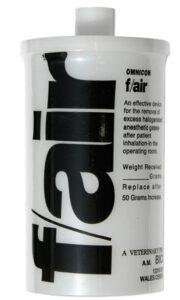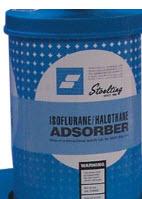Use and Maintenance of Gas Anesthesia Equipment
Background & Purpose
Anesthesia machines and vaporizers must be in good working condition in order to ensure that the appropriate percentage of anesthetic agent is being delivered to the animal and that all waste gases are appropriately absorbed to prevent accidental human exposure. Waste anesthesia gases may adversely affect liver, kidney and the central nervous system in chronically-exposed laboratory personnel.
Policy
IACUC policy requires that all equipment associated with the delivery of inhalant anesthetics be evaluated regularly to assure proper function and integrity.
- Anesthetic vaporizers must periodically have their calibrations verified by a professional and equipment inspected and serviced as required.
- Personnel must be trained in the proper use of anesthetic machines and vaporizers prior to operation.
- An effective method of scavenging waste gases must be used at all times.
Guidelines and Procedures
Anesthetic Equipment
Before each use, anesthetic machines with vaporizers and other components such as tubing, flow meters, valves, gaskets, scavenging system, etc. should be inspected by the user to ensure that all components are correctly set up and functioning properly without any leaks in the system.
Vaporizers
Vaporizers must be tested by an authorized anesthetic machine service provider to verify accuracy of calibration as recommended by the manufacturer. In the absence of manufacturer recommendations, this testing must occur at least once every three years to verify accuracy of calibration. If the verified anesthetic delivery is > 20% out of calibration, the unit must be serviced and calibrated by an authorized service provider.
Machines with re-breathing circuits
Rebreathing circuits consist of a CO2 absorbing system either with or without a ventilator. Any machine with a rebreathing circuit must be inspected and serviced by an authorized anesthetic machine service provider annually. The Soda lime/Baralyme (CO2 absorbers) should be changed regularly; minimally this should occur at least once after every 12 hours of use.
Waste Gas Scavenging Systems


An effective mechanism of waste gas scavenging is essential; methods of scavenging waste anesthetic gasses include use of a fume hood, venting to house HVAC or house vacuum, or use of charcoal canisters.
Charcoal canisters (also known as absorbers) are commonly used to absorb halogenated waste and may look like this:
To use the canister properly and ensure the safety of lab personnel:
- The canister must be weighed when it is first purchased - record the starting weight on the side of the canister.
- The canister must be weighed periodically, as it will gradually become heavier as it absorbs waste gases. Users must record the date and weight, preferably on the side of the canister.
- Canisters must be replaced according to manufacturer's specifications (e.g. once it has gained a specific amount of weight).
Resources
- EH&S Guidelines for Waste Anesthetic Gas Info
- Contact ULAR to arrange for routine maintenance of anesthesia equipment (UCInetID login required)